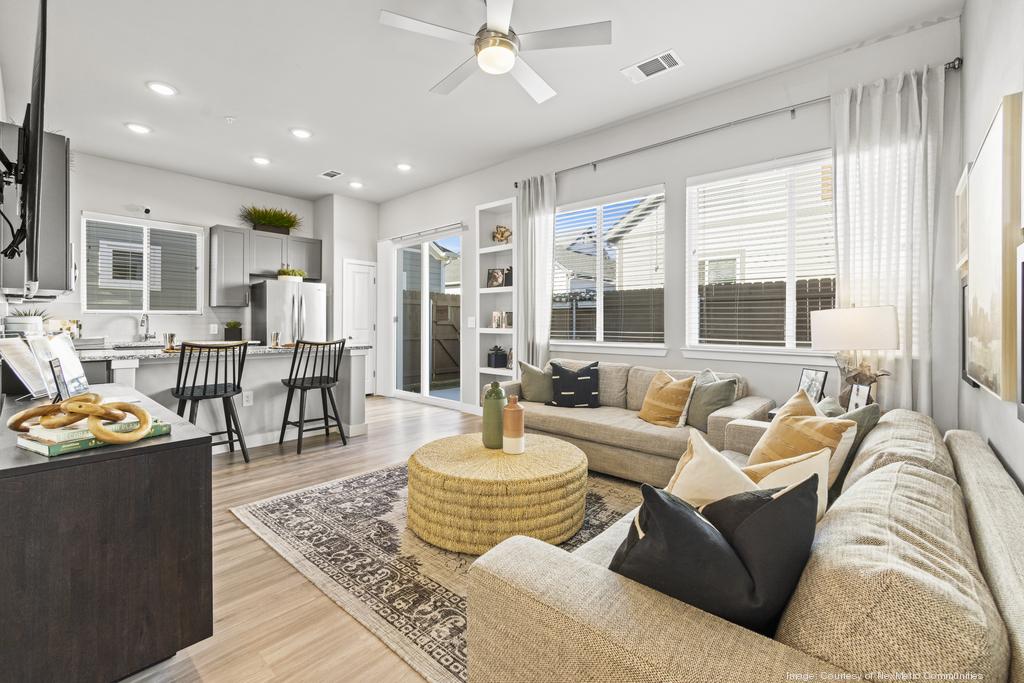Pent-up demand from both investors and renters wanting access to the asset class has set up the build-to-rent space to thrive in Dallas-Fort Worth this year and beyond.
Even with the optimism around the space, BTR does have its own challenges, from zoning to struggles around pricing deals to increased competition.
Experts in the North Texas BTR world touched on the roadblocks and opportunities on the horizon in 2023 for developers, owners, brokers, and construction professionals in the roundup that follows:
Sunny Patel, director of Land Acquisition, Taylor Morrison:
From our Taylor Morrison Yardly brand perspective, we are working to develop additional product types – two-story, for example – that may be better suited for infill locations that require more density.
Our single-story Yardly communities typically comprise of 15 to 30 buildable acres.
Also, from an amenity standpoint, we are continually evolving our offerings to address ongoing demographic trends. We are excited about the future of Yardly in Dallas-Fort Worth.

Sunny Patel is the director of Land Acquisition for Taylor Morrison.
James Ray, portfolio manager, MetLife Investment Management:
Roughly a third of U.S. renters live in single-family homes, and we see that demand growing. Our priority is to provide housing that those renters want: Units designed for families, amenities, yards, garages, access to schools, professional management, access to key thoroughfares and job centers, etc.
It’s impossible to benchmark cap rates today, especially for high-quality/institutional products, due to a lack of trades. But regardless of where cap rates shake out, I think purpose-built BTR is positioned to be a winner from a return perspective for two reasons. First, the outlook for property income growth remains favorable compared to other property types. Second, institutional investors want to reallocate out-of-office and retail, and single-family rentals provide a unique opportunity to move the allocation needle meaningfully.
We think it’s important to find an overlap between two key constituents: Families looking for three- to four-bedroom homes with access to schools desperately need reasonably-priced housing and institutional investors, e.g., pension funds and insurance companies, who value the product as long as it is high-quality and durable.
Josh Eadie, vice president of Development, NexMetro Communities
BTR is well-positioned to benefit from the disparity between traditional multifamily and single-family homes. The product type fits an increasingly wide band of prospects and commands a premium compared to other options. The quality, flexibility and livability of BTR make it extremely resilient.
Integration into residential master plans is a great area of opportunity as it helps stabilize areas quicker and allows for a more flexible option for those who want to live in an area but perhaps not in a long-term investment option.
Many groups see an opportunity to boost returns when other key areas may have declined by pivoting into the space. Good competition is always great for innovation in the space, and some new approaches will raise the bar for BTR. On the other hand, some groups’ presence in the space may be an experiment that yields more traditional opportunities once markets stabilize again.

Josh Eadie is vice president of Development for NexMetro Communities.
Glenn Lanier, director of Development, Provident Realty Advisors
Traditional single-family builders are getting into the space as demand wanes on the for-sale side. As we’re learning, their crews operate turnkey, whereas many multifamily crews specialize in individual trades. The single-family builders that figure out how to operate in a multifamily fashion will do well pivoting to BTR. The pressure this puts on the multifamily builders will force some normalcy back into pricing.
Tom Dosch, principal, Dosch Marshall Real Estate
In DFW, zoning continues to be a challenge. Since BTR is a new concept to most cities, very few sites are zoned “by right,” which means a re-zone is required. In many cases, cities have been reluctant to provide BTR zoning, forcing developers to look further into the suburbs. As the overall market has adjusted due to interest rates and rising costs, developers are looking to come back closer to core established sub-markets. In those areas, available land large enough for BTR development is in short supply.
Eric Stockley, vice president, NorthMarq
There is significant pent-up capital that is earmarked for BTR – over $85 billion in dry powder – creating a robust buyer pool.
However, these investors are requiring higher cap rates to hit the same return profile for their investment strategies. The obvious bogey affecting returns has been the hawkish movements by the Fed over the past year, which has doubled lending rates and created a larger bid-ask spread between buyers and sellers – affecting transaction volume in the sector.
This is not an issue specific to BTR or housing in general; it is affecting all product types nationally.
Joel Thomas, executive vice president of Development and Construction, TRICOR Construction
Some near-term roadblocks are a possible reduced pace of capital allocation into our space, given the economic uncertainty, and then any kind rental restrictions or added rental fees that municipalities and HOAs are starting to discuss.
While the “for sale” market is slowing down, hard costs are coming down monthly. We are seeing it across the board, and with that, lead times and supply are coming back to normal levels. A slow “for-sale” market has been great for us.


